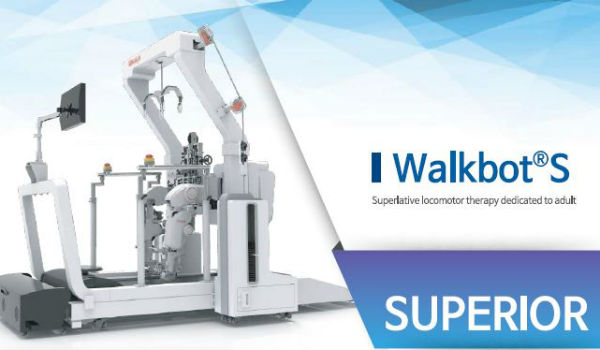|
P&S Mechanics (www.walkbot.co.kr) is a Korean company established in 1997 and specializing in the rehabilitation of humans by using robots.
The company’s core business revolves around the development and production of a variety of rehabilitative and medical-use robots; and the design and development of automated devices, medical devices, and robots.
P&S Mechanics first began work on the Robot Assisted Gait Training Device, “Walkbot,” in 2006, with first stage development completed in 2010. In 2011, Walkbot_S first launched to the approval of the KFDA. In 2012, they launched the Walkbot_K, which again received KDFA certification. In 2013, Walkbot CE 0120 received certification. One year later, they shipped their first exports to Spain. In 2015, they were registered with the USFDA, and began exports to Peking University Care Rehabilitation Hospital after receiving China’s CFDA Certificate. The company has since then expanded its market, sending continuous shipments to Russia, Turkey, China and USA.
The Walkbot is meant to supplement or replace current conventional rehabilitative training methods for adult patients who are mobility impaired due to strokes, spinal cord injuries, or traffic accidents; and pediatric patients with congenital or acquired mobility impair such as cerebral palsy. The robot system is attached to both legs of the patient; the natural walking movement is patient-specific, and different gait training modes allow rehabilitation training to be optimized through the robot/patient interaction in this cutting edge robot assistance gait rehabilitation training system.
The technological trend in rehabilitative equipment in the past necessitated a great deal of manpower to assist in the training, as traditional methods employed a “rehabilitation support device”; now, this company’s state-of-the-art robot assistance gait rehabilitation training system requires only a single operator.
| |
 |
|
| ▲Walkbot_K for children |
The Walkbot line-up inclues the Walkbot_K for children; the Walkbot_S for adults; and the module, exchangeable add-on type Walkbot_G. Some special features and benefits of the Walkbot include: △ Accurate and repeatable lower limb hip/knee/ankle kinematic movement and strength assistance △ Reduction of patient fatigue and restoration of muscular strength and function of the injured lower limb △ Improvement to patient biofeed back and augmented reality to increase neuroplasticity (optional) △ Unlimited generation of patient-specific gait patterns according to the patient's physical condition △ Promotion of neuroplasticity by stimulation to hearing (Metronome), sight (Front Camera), and touch (Games/Sports)
| |
 |
|
| ▲Walkbot_S for adults |
△ Various customized gait training programs based on the condition of patient (Basic / Interactive / Assist / Resist Mode, Impedance Control / Path Control)
△ Equipped with a gait analyzer to measure the dynamic low pressure of the patient (Walkbot_G) △ Various assessment tools (ROM, Stiffness, Force, Gait Simulation & Analysis) △ Various convenience functions (EMR system connection/24 hour A/ S/ Korean and English language support/Sensitivity management).
In particular, this gait rehabilitation training system boasts a unique ankle joint drive system that works in synchronization with the hip and knee joints for a more natural gait pattern that closely resembles actual walking motion. The dragging phenomenon was eliminated during the rehabilitation, and both in and out-patients can be fitted with this product.
In addition, Walkbot has the world's first automatic leg length adjustment system, which allows precise inter-joint length adjustment in 1mm increments. The joint’s axis of rotation is formed at a precise location, making a natural gait possible, and a customized walking pattern can be implemented. And because of the shortened training time, more patients are able to have access to this treatment.
As an added option, the Walkbot provides exciting customized 3-D virtual reality exercise games for a more interactive experience, so that the rehabilitative training session is perceived less as monotonous therapy and more as an enjoyable walk in their ecologically natural or virtual environments.
There are three modes of Gait training: Basic training, Interactive training, and Assist training modes. The Basic training mode has a fixed speed and stride, making it suitable for a first-time robot rehabilitation patient. In the Interactive training mode (Active training mode), the speed increases or decreases according to the patient's strength and is suitable for those patients who are well into their rehabiltation process. In the Assist training mode, the injured and uninjured sides are distinguished and the robot support on the affected limb can be controlled, making it suitable for hemiplegic patients.
The Walkbot_K for children is suitable for children 86 to 148cm in height and weighing up to 70kg. The Walkbot_S for adults is appropriate for adults 140 to 200cm in height and weighing up to 135kg. |
